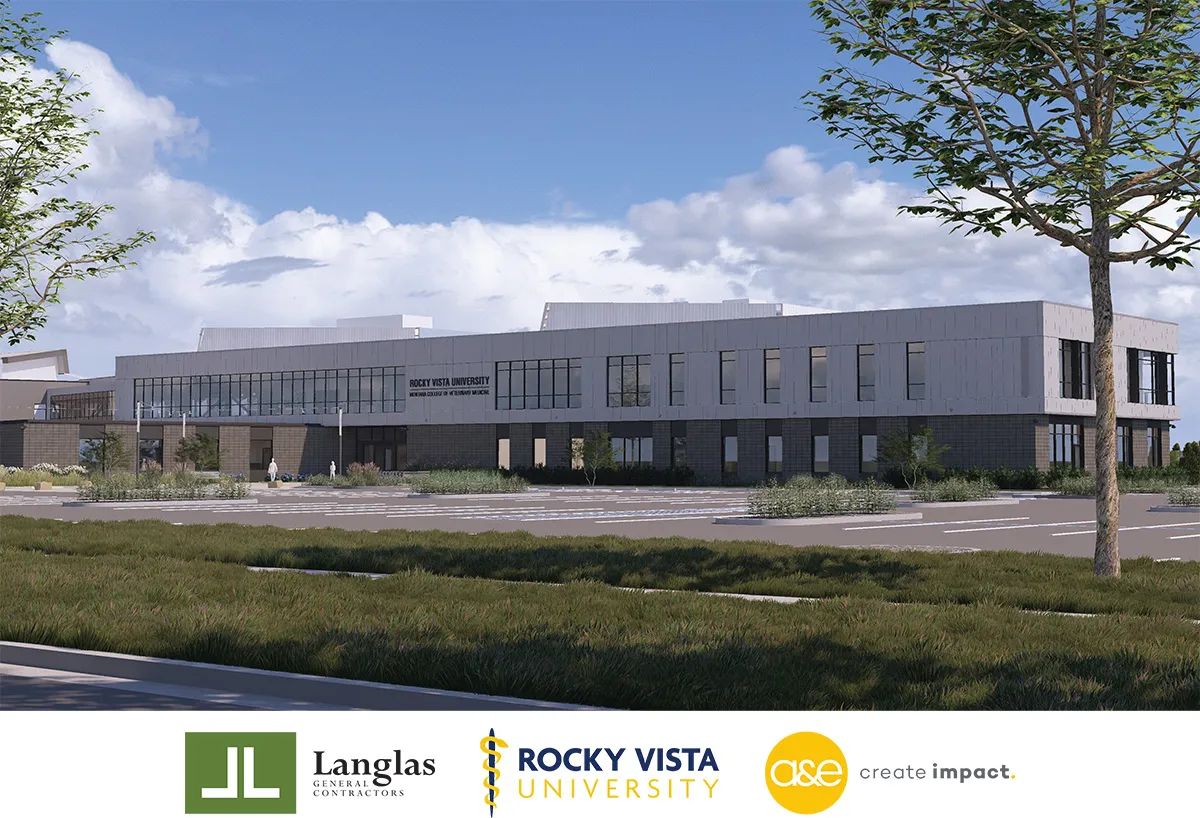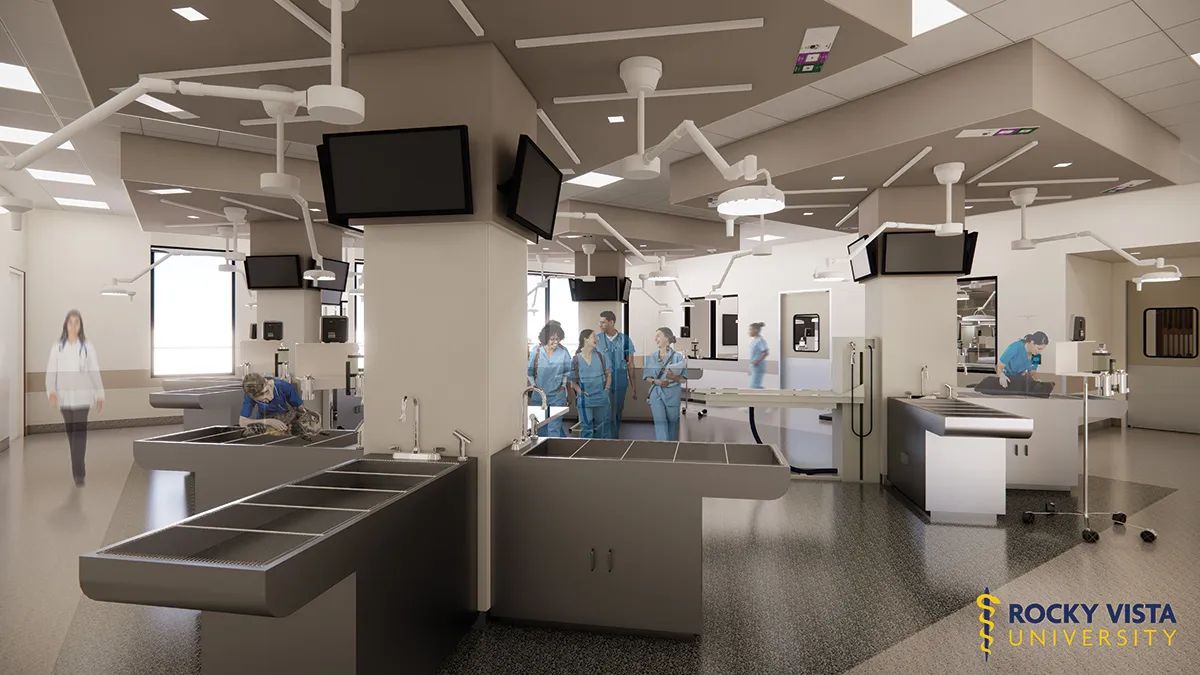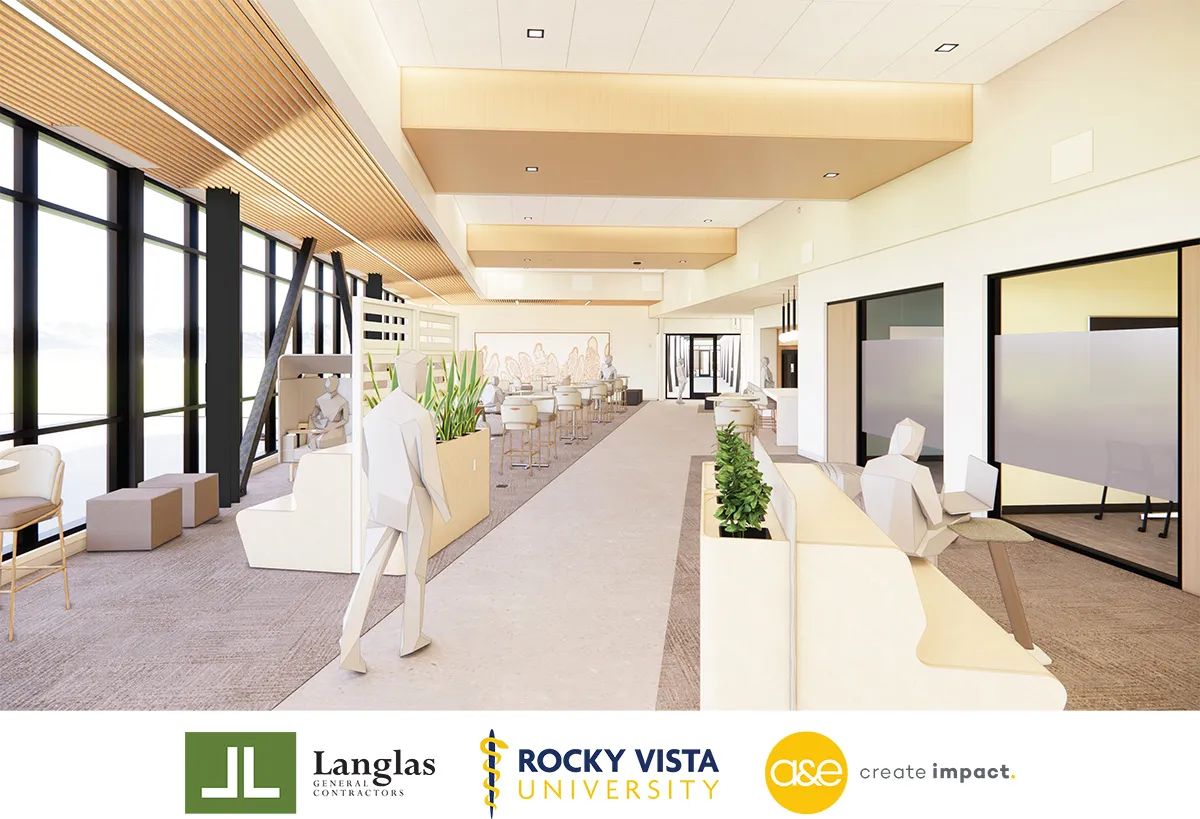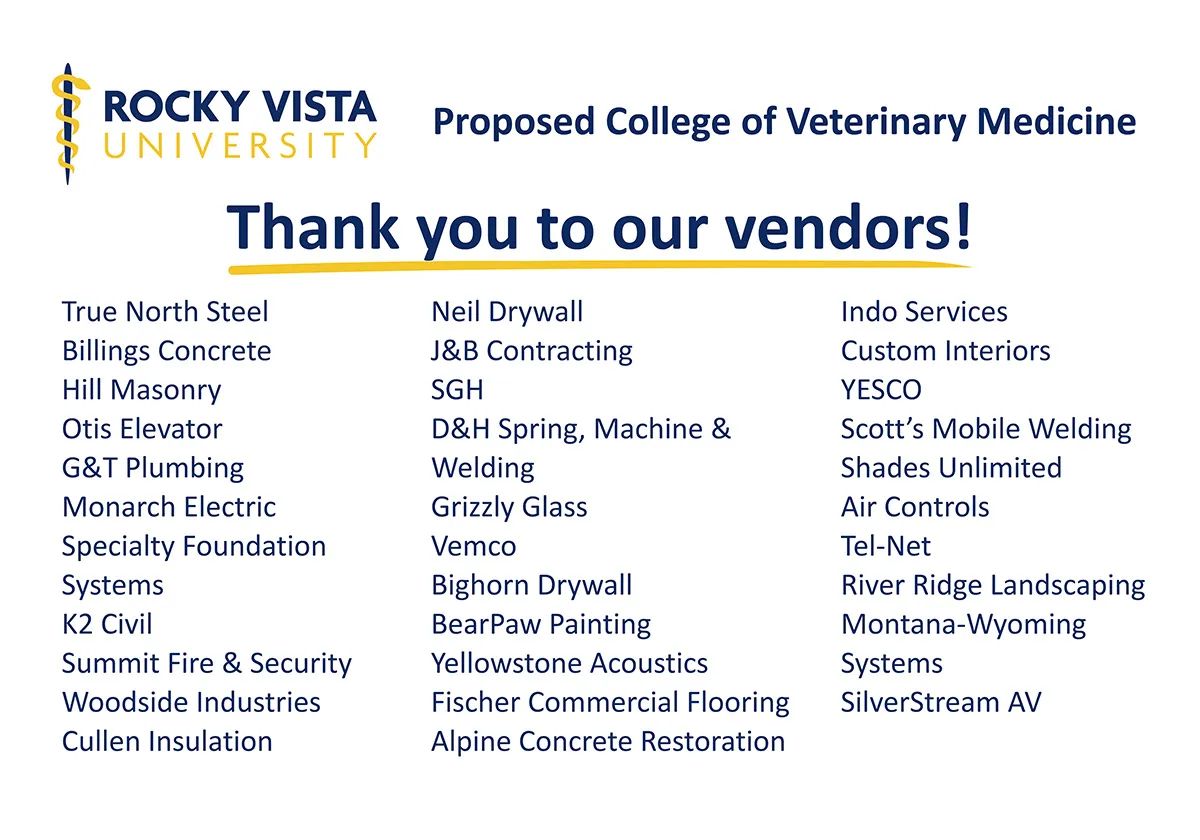
Rocky Vista Expanding Into Veterinary Medicine
August 2025
article by Stephanie Hobby | Renderings courtesy of Rocky Vista University
This spring, Rocky Vista University hosted a groundbreaking event for the upcoming College of Veterinary Medicine. The new facility is currently under construction adjacent to the Rocky Vista University Montana College of Osteopathic Medicine, which opened in 2023 on 12 acres in the West End of Billings. A skybridge will connect the two campuses, fostering better student and faculty interactions.
Founding Dean of the proposed veterinary college, Dr. Robert Murtaugh, stated that once accredited, the college is expected to join the 32 existing American Veterinary Medical Association (AVMA)- accredited colleges across the country. Currently, only 27 states offer AVMA-backed colleges, so students hoping to pursue the profession often have to relocate. The two closest programs, both located over 500 miles away from Billings, are Colorado State University in Fort Collins and Washington State University in Pullman. For context, there are 158 accredited MD-granting and 37 accredited DO-granting schools in the nation.

Launching a new veterinary school is a monumental undertaking, and building the facility is just the beginning. Three assistant associate deans were recently hired to help with the planning and development. “We have a solid team now, and our intent is to try to accomplish accreditation a year from now, hire faculty, and have students in by the summer of 2027,” Murtaugh said.
Attaining accreditation is an arduous process. The Higher Learning Commission, an independent agency founded in 1895 to accredit degree-granting institutions of higher education, facilitates quality assurance in higher education across the United States. In April of last year, HLC formally approved the RVU’s request to offer the Doctor of Veterinary Medicine (DVM) degree. The university is now working with the AVMA Council on Education to finalize the process.
When considering a new location, planners took into account Montana’s economic reliance on agriculture, the strong medical and educational corridor in Billings, and the geographical distance from another veterinary school.

"Billings is the largest population center in Montana and the surrounding states, and there are no vet schools in the Mountain West region. It makes sense from a lot of standpoints, such as geography, population growth, and a welcoming community."
-Dr. Robert Murtaugh
Organizers say the new program is taking an innovative approach to teaching and is paired with a state-of-the-art facility. Training will include a blend of real-world veterinary medical experiences through simulations, anatomy and surgical labs, and rich clinical encounters. The new facility spans a 60,000-square-foot campus, where organic meeting spaces and natural light were design priorities. Every classroom and lab space was created to offer an optimal learning environment. RVU anticipates training 125 students per year.
Langlas General Contractors, a Montana-based firm with deep roots in the region, is overseeing construction of the new veterinary facility. Their role in bringing this high-impact project to life further solidifies their commitment to shaping educational and healthcare infrastructure across the state.
As the lead architecture firm on the project, A&E Design is playing a key role in bringing that vision to life. “A&E Design is proud to be part of the visionary team bringing Rocky Vista University’s College of Veterinary Medicine to life,” said Dusty Eaton. “As the lead design firm, we’re honored to help shape a forward-thinking facility that will serve as a cornerstone for veterinary education and animal care.”
One of the program's goals is to prioritize student support. Beyond academics, RVU anticipates having a Student Affairs team to support success in learning, provide mental health resources, offer wellness programs, facilitate student organizations, offer tutoring, and assist with career planning.
Additionally, students will be able to complete their degree in three years with a compressed curriculum. Traditionally, veterinary students complete their degree over four years, with the first two summers off.

“We’re going to put it all together without breaks in between the semesters,” Murtaugh said. “They will receive the same amount of training and education, but coursework will be done over two years instead of three.” The final year will be spent in dispersed clinics, much like what medical students do in their final years of training, where students rotate through different hospitals and clinical groups.
The proposed school will be able to track each student in the final 12 months of their rotations to ensure they have opportunities to specialize in their areas of interest. “We will have lots of opportunities to work with a variety of practices, hopefully both regionally and nationally, and options to make that final year customized to their interests and needs,” he said.
Billings is uniquely situated to facilitate several collaborations for the proposed veterinary school. Murtaugh says ZooMontana, Yellowstone Valley Animal Shelter, and Yellowstone Boys and Girls Ranch’s cow/calf operation have all indicated their support for working with students and faculty. Such partnerships would not only provide optimal care for animals at those institutions but would also present a variety of learning opportunities for students.
Murtaugh says they are also planning to work with local veterinary clinics and hospitals to enhance training for their students. “We have a lot of animal hospitals we work with across the Mountain West,” he said. “Everything from dairy practices to animal shelters. For the students, we’ll emphasize the mixed animal and rural practice needs.” They will evaluate potential students based on these interests and support them as they pursue specialized training in their final years of school and placement after graduation.
He added that having access to such a wide variety will offer students numerous opportunities to explore various careers. “Some will do small animals, some will do shelter medicine, some will decide to do an internship in a specialty training, and others might decide they want to be an orthopedic surgeon in veterinary medicine,” Murtaugh said.
Originally printed in the August 2025 issue of Simply Local Magazine
Never miss an issue, check out SLM's digital editions here!





